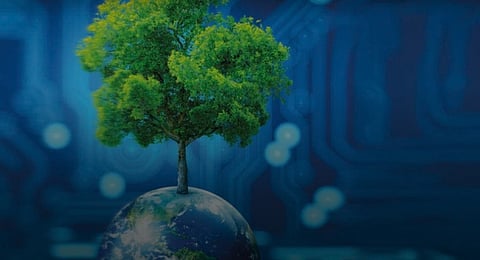From Oil to Renewables: The Middle East’s Green Energy Pivot
For decades, the Middle East has been synonymous with oil wealth, powering global economies and shaping geopolitical dynamics. But a quiet revolution is unfolding across the region—one that seeks to redefine its energy future.
Today, Middle Eastern nations are making bold strides to shift from fossil fuels to renewable energy, driven by climate commitments, economic diversification goals, and the urgent realities of environmental degradation.
This pivot is not just symbolic. It represents a fundamental reimagining of energy in one of the world’s most resource-dependent regions. And it could make the Middle East a global leader in clean power.
The Turning Point: Climate and Economic Realities
While the region has long relied on oil for economic growth, leaders are now recognizing that this model is unsustainable. The volatility of oil prices, coupled with global pressure to reduce carbon emissions, has prompted countries to explore alternatives.
The 2021 IPCC climate report and increasing frequency of extreme weather—scorching heatwaves, dust storms, and water shortages—have made it clear that the region cannot afford to wait. The green transition is no longer a choice; it’s a necessity.
Saudi Arabia’s Renewable Roadmap: From Oil Giant to Green Pioneer
Saudi Arabia, the world’s largest oil exporter, has taken an unexpected lead in this transformation. The kingdom’s Vision 2030 lays out ambitious goals to reduce dependency on oil and develop a green economy.
Under the Saudi Green Initiative, the country is investing heavily in solar and wind energy. One of its flagship projects, NEOM, a $500 billion smart city, aims to run entirely on renewable energy. It also includes Oxagon, a floating industrial city powered by green hydrogen and clean power.
Additionally, the Al Shuaibah Solar Project, expected to be one of the world’s largest, will generate over 2.6 GW of electricity—enough to power hundreds of thousands of homes.
UAE: A Beacon of Climate Diplomacy and Clean Energy
The United Arab Emirates is positioning itself as a global hub for renewable energy and climate leadership. As the host of COP28 in 2023, the UAE has doubled down on its green commitments. The country aims to reach net-zero emissions by 2050, becoming the first in the region to announce such a goal.
Masdar City in Abu Dhabi stands as a living laboratory for sustainable urban development, showcasing energy-efficient buildings, electric public transport, and solar-powered infrastructure. Meanwhile, the Mohammed bin Rashid Al Maktoum Solar Park in Dubai is one of the world’s largest solar farms, with a planned capacity of 5 GW by 2030.
The UAE is also investing globally, through Masdar’s renewable projects in Africa, Asia, and Europe, signaling its intent to be a major player in the global clean energy race.
Green Hydrogen: The Middle East’s Next Export Power
Beyond solar and wind, the Middle East is eyeing green hydrogen as a future export commodity. With abundant sunlight and available land, the region is ideally suited to produce hydrogen through electrolysis powered by renewables.
Saudi Arabia, Oman, and the UAE have all launched hydrogen strategies, aiming to supply Europe and Asia with clean fuel. The Neom Green Hydrogen Company is building the world’s largest green hydrogen plant, expected to start operations by 2026.
Challenges Ahead, But Momentum Builds
The path to a renewable future is not without challenges. The region still heavily subsidizes fossil fuels, and political complexities could slow implementation. However, strong leadership, international partnerships, and investor interest are helping to overcome these barriers.
Transitioning from oil to renewables requires more than technology—it demands a cultural and policy shift. Fortunately, that change is underway.
A New Energy Era
The Middle East’s green pivot is reshaping both its regional identity and its role in the global energy landscape. From the oil rigs of the past to the solar arrays and hydrogen plants of the future, the transformation is profound.
As one of the sunniest regions on Earth, the Middle East is now poised not just to adapt to the energy transition—but to lead it.


